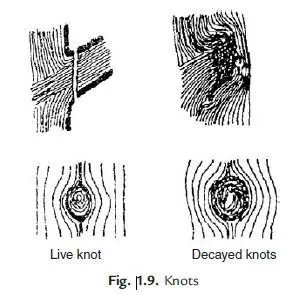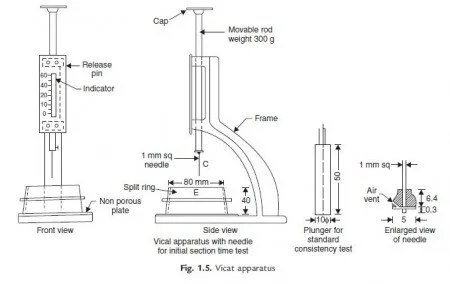Various bases are considered for the classification of timbers. The following are the important basis:
(i) Mode of growth
(ii) Modulus of elasticity
(iii) Durability
(iv) Grading
(v) Availability.
(i) Classification Based on Mode of Growth: On the basis of mode of growth trees are classified as (a) Exogeneous and (b) Endogeneous (a) Exogeneous Trees: These trees grow outward by adding distinct consecutive ring every year. These rings are known as annual rings. Hence it is possible to find the age of timber by counting these annual rings. These trees may be further divided into (1) coniferrous and (2) deciduous. Coniferrous trees are having cone shaped leaves and fruits. The leaves do not fall till new ones are grown. They yield soft wood.
Deciduous trees are having broad leaves. These leaves fall in autumn and new ones appear in springs. They yield strong wood and hence they are commonly used in building construction. The classification as soft wood and hard wood have commercial importance. The difference between soft wood and hard wood is given below:
1. In soft wood annual rings are seen distinctly whereas in hard wood they are indistinct.
2. The colour of soft wood is light whereas the colour of hard wood is dark.
3. Soft woods have lesser strength in compression and shear compared to hard woods.
4. Soft woods are light and hard woods are heavy.
5. Fire resistance of soft wood is poor compared to that of hard wood.
6. The structure of soft wood is resinous while structure of hard wood is close grained.
The cross-section of a exogeneous tree is as shown in the Fig. 1.7. The following components are visible to the naked eye:
1. Pith: It is the inner most part of the tree and hence the oldest part of exogeneous tree when the plant becomes old, the pith dies and becomes fibrous and dark. It varies in size and shape.
2. Heart Wood: This is the portion surrounding pith. It is dark in colour and strong. This portion is useful for various engineering purpose. This is the dead part of wood. It consists of several annular rings.
3. Sap Wood: It is the layer next to heart wood. It denotes recent growth and contains sap. It takes active part in the growth of trees by allowing sap to move in upward direction. The annual rings of
sap wood are less sharply divided and are light in colour. The sap wood is also known as alburnum.
4. Cambium Layer: It is a thin layer of fresh sap lying between sap wood and the inner bark. It contains sap which is not yet converted into sap wood. If the bark is removed and cambium layer is
exposed to atmosphere, cells cease to be active and tree dies.
5. Inner Bark: It is a inner skin of tree protecting the cambium layer. It gives protection to cambium layer.
6. Outer Bark: It is the outer skin of the tree and consists of wood fibres. Sometimes it contains fissures and cracks.
7. Medullary Rags: These are thin radial fibres extending from pith to cambium layer. They hold annular rings together. In some of trees they are broken and some other they may not be prominent.
(b) Endogeneous Trees: These trees grow inwards. Fresh fibrous mass is in the inner most portion. Examples of endogenous trees are bamboo and cane. They are not useful for structural works.
(ii) Classification Based on Modulus of Elasticity: Youngs modulus is determined by conducting bending test. On this basis timber is classified as:
Group A: E = 12.5 kN/mm2
Group B: E = 9.8 kN/mm2 to 12.5 kN/mm2
Group C: E = 5.6 kN/mm2 to 9.8 kN/mm2.
(iii) Classification Based on Durability: Durability tests are conducted by the forest research establishment. They bury test specimen of size 600 × 50 × 50 mm in the ground to half their length and observe their conditions regularly over several years. Then timbers are classified as:
High durability: If average life is more than 10 years.
Moderate durability: Average life between 5 to 10 years.
Low durability: Average life less than 5 years.
(iv) Classification Based on Grading: IS 883-1970 classifies the structural timber into three grades-select grade, grade I and grade II. The classification is based on permissible stresses, defects etc.
(v) Classification Based on Availability: Forest departments classify timbers based on the availability as
X Most common. 1415 m3 or more per year
Y Common. 355 m3 to 1415 m3 per year
Z Less common. Less than 355 m3 per year.



This information is really helpful. Keep giving update on these types of topics.
Thanks a lot
this information is helpful i would love to have it in my inbox
really helpful…. more strength
Thanks a lot .. It was very useful in completing my assignments in my BCE subject Thanks again
its very informative i made my assaignment
i have learnt something good about classification of timber